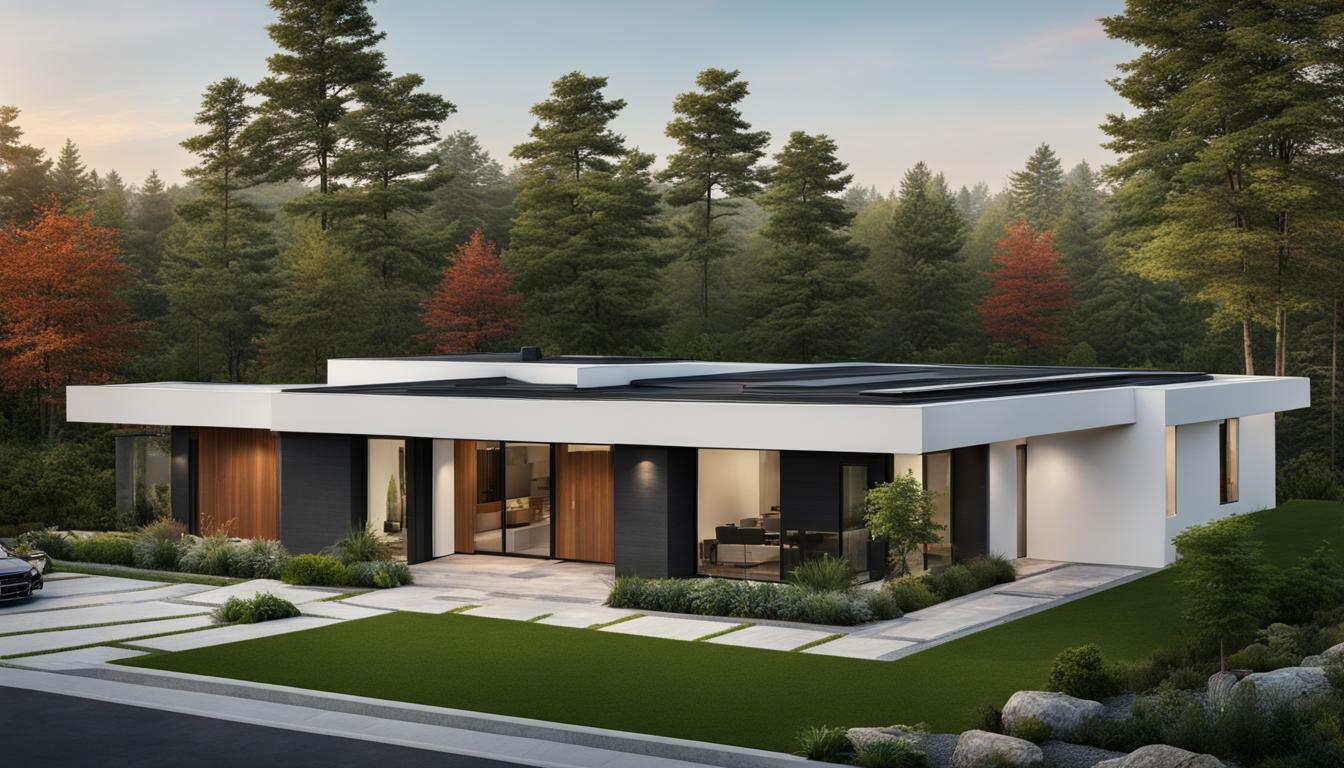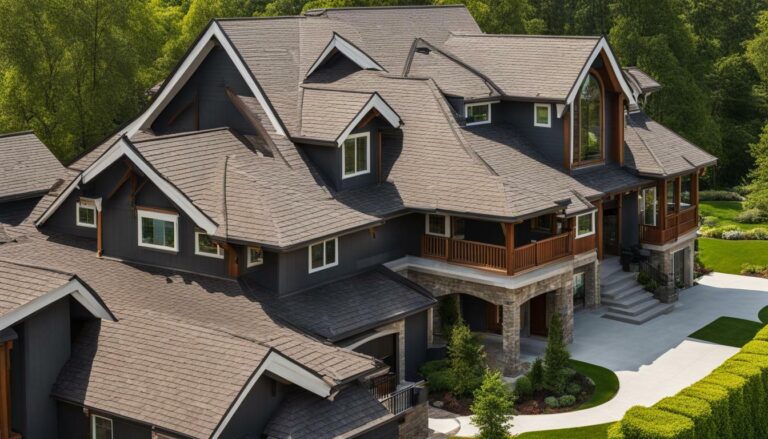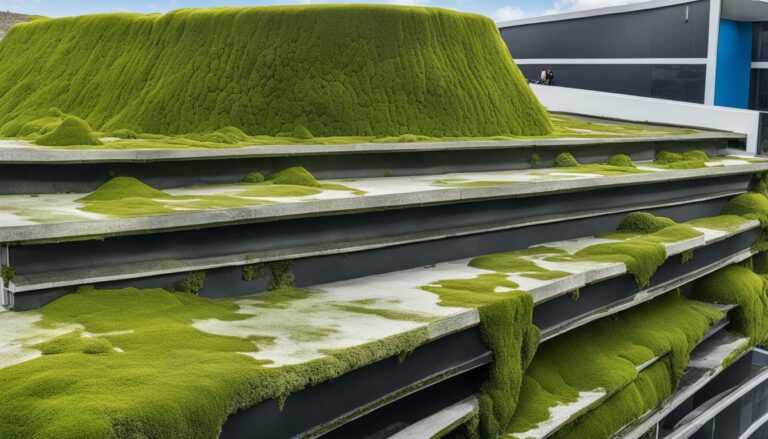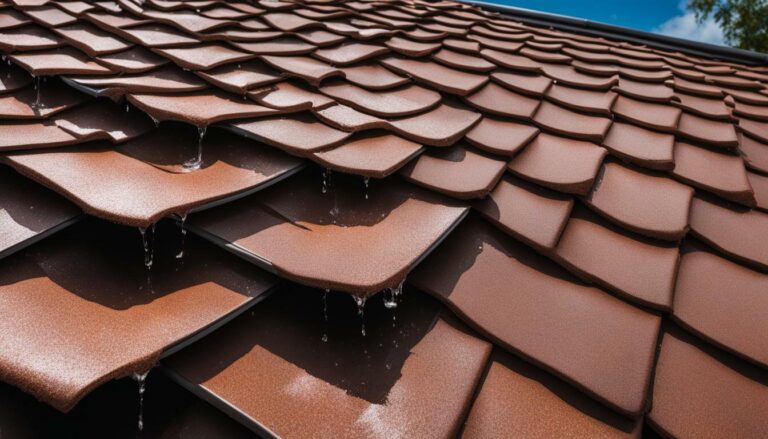Explore Roofing with Built-In Gutters for Your Home
When considering roofing options for your home, roofing with built-in gutters can provide an efficient and visually appealing solution. These concealed roof drainage systems, also known as box gutters, offer numerous benefits, including preserving the historic character of buildings and seamless integration into the roofline.
However, it’s important to note that built-in gutters require regular maintenance to prevent issues such as standing water and costly repairs. The gutters are typically lined with formed metal, such as terne-plate, which needs protection from corrosion. Soldered joints can also be vulnerable and may require messy and temporary repairs. Restoring built-in gutters can be expensive and finding skilled craftsmen for the job can be challenging.
Fortunately, there are alternatives to traditional restoration methods. Elastomeric coating systems or waterproof roofing membranes can effectively protect the gutters from corrosion and extend their lifespan. These solutions offer a cost-effective and durable approach to maintaining built-in gutters.
Common gutter issues that can arise with built-in gutters include corrosion, clogs, incorrect pitching, worn flashing, and the need for diverter flashing. Regular inspections and prompt addressing of these issues are essential to avoid costly repairs and further damage.
Box gutters, which are usually wider and less likely to become clogged, are an integral part of the home’s overhang or wall structure. They provide both aesthetic appeal and functionality, but neglecting their maintenance can lead to expensive repairs down the line.
Key Takeaways:
- Roofing with built-in gutters offers a seamless integration of roof drainage systems.
- Regular maintenance is crucial to prevent costly repairs and standing water issues.
- Elastomeric coating systems and waterproof roofing membranes can protect built-in gutters from corrosion.
- Common gutter issues include corrosion, clogs, incorrect pitching, worn flashing, and the need for diverter flashing.
- Box gutters are wider and less prone to clogging, but proper maintenance is still necessary.
(Note: The text provided contains some formatting in HTML tags to show the structure and formatting of the content. However, the actual article should only contain the text within the HTML tags.)
Roofing with built-in gutters incorporates a well-designed gutter system that efficiently manages water runoff, safeguarding your home from potential damage. These integrated gutter systems are specifically designed to collect and divert rainwater away from your roof and foundation, preventing issues such as water damage, mold growth, and foundation problems.
One of the key advantages of roofing with built-in gutters is the seamless integration of the gutter system into the roofline. This allows for a more cohesive and aesthetically pleasing appearance, as there are no visible gutters hanging below the roof edge. Additionally, the absence of traditional gutters also eliminates the need for frequent maintenance and cleaning, reducing the time and effort required to keep your gutters free of debris.
Furthermore, the integrated gutter system helps to distribute the weight of the water evenly across the roof, reducing the strain on individual gutter sections. This can help to prevent gutter overflow and potential leaks, ensuring that your home remains protected even during heavy rainfall. With proper installation and regular maintenance, a roofing system with built-in gutters can provide long-lasting and effective water management for your home.
| Common Benefits of Roofing with Built-In Gutters |
|---|
| Efficient water management and runoff |
| Improved aesthetics with seamless integration |
| Reduced maintenance and cleaning requirements |
| Prevention of water damage and foundation problems |
Conclusion
Roofing with built-in gutters offers a comprehensive and effective solution for managing water runoff from your roof. By seamlessly integrating the gutter system into the roofline, these systems provide enhanced aesthetics, reduced maintenance needs, and improved protection against water damage. If you’re considering a roofing upgrade, exploring options with built-in gutters can be a wise choice to safeguard your home and preserve its historic appeal.
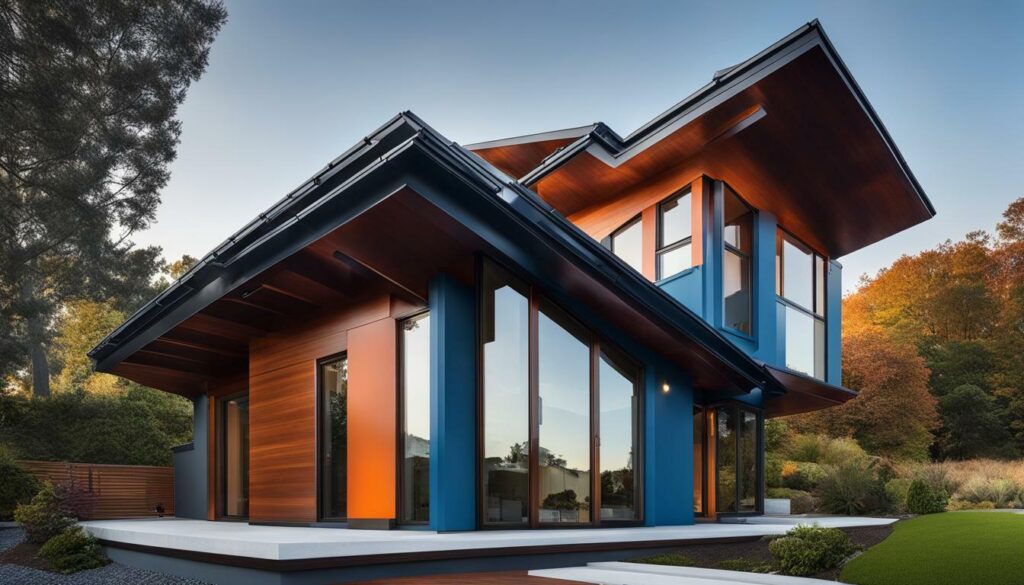
The integration of seamless roofing and gutters provides homeowners with a high-performance solution that eliminates the risk of leaks and enhances the overall aesthetic appeal. Unlike traditional roofing systems that rely on separate gutters attached to the edge of the roof, seamless roofing incorporates the gutter system directly into the roof design, ensuring a seamless and watertight connection.
This innovative approach offers numerous advantages. Firstly, the absence of visible seams eliminates potential leakage points, providing homeowners with peace of mind and long-lasting protection against water damage. Additionally, the seamless design enhances the overall aesthetic appearance of the roof, creating a sleek and modern look that enhances the curb appeal of any home.
When it comes to installation, seamless roofing and gutters require specialized expertise. Professional roofing contractors experienced in gutter and roofing installation are essential to ensure a proper fit and seamless integration. By entrusting the installation process to professionals, homeowners can rest assured that their roofing and gutter system will be expertly installed, providing optimal performance and durability.
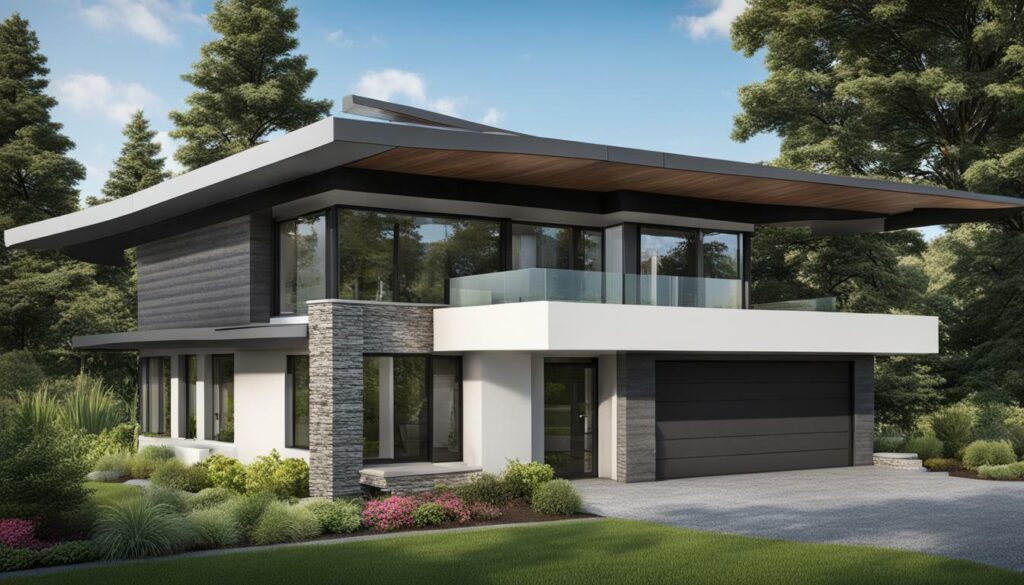
Regular maintenance is crucial to ensure the longevity and functionality of seamless roofing and gutters. Homeowners should schedule routine inspections, cleaning, and repairs to address any potential issues promptly. By staying proactive with maintenance, homeowners can avoid costly repairs and extend the lifespan of their roofing and gutter system.
In summary, seamless roofing and gutters offer a high-performance solution that combines functionality and aesthetics. With proper installation and maintenance, homeowners can enjoy a leak-free and visually appealing roofing system that adds value and protection to their homes.
Understanding the Benefits of Built-In Gutters
Built-in gutters offer numerous advantages, from seamlessly maintaining the architectural integrity of your home to providing efficient water management and minimal maintenance requirements. These concealed roof drainage systems, also known as box gutters, are designed to preserve the historic character of buildings while effectively collecting and diverting rainwater.
One of the key benefits of built-in gutters is their seamless integration into the roofline, eliminating visible seams that can be potential leakage points. With no visible gutter system, your home’s aesthetic appeal remains intact, enhancing its overall curb appeal. This seamless design also ensures a durable and leak-proof solution, protecting your home from water damage and costly repairs.
Another advantage of built-in gutters is their efficient water management. These gutter systems effectively collect rainwater and channel it away from your home’s foundation, preventing issues such as water infiltration and foundation damage. By directing water away from the structure, built-in gutters help to maintain a stable foundation and minimize the risk of structural issues.
In terms of maintenance, built-in gutters require less upkeep compared to traditional gutter systems. With no exposed gutter channels, there are fewer opportunities for debris accumulation and clogging. This means less time spent on cleaning and maintenance tasks, allowing you to enjoy your home without the hassle of frequent gutter maintenance.
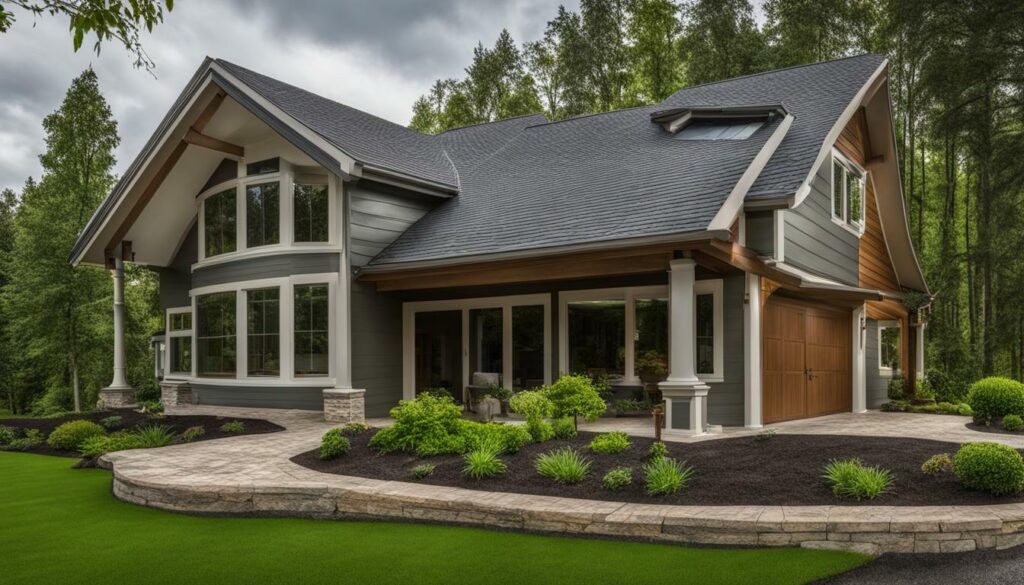
For older homes, box gutters are a popular choice due to their ability to seamlessly blend with the existing architectural elements. These gutters are typically wider and less likely to become clogged compared to traditional gutters, making them ideal for managing the increased water flow associated with older homes.
However, it’s important to note that box gutters can require specialized maintenance and repairs. The formed metal lining, such as terne-plate, needs protection from corrosion, and soldered joints can be a weak point that may require occasional repairs. Restoring built-in gutters can be expensive, and finding skilled craftsmen experienced in working with these unique gutter systems can be a challenge.
Overall, built-in gutters offer a beautiful and protective element for older homes, seamlessly blending into the architecture while effectively managing water flow. With proper maintenance and periodic inspections, built-in gutters can provide long-lasting water management solutions, preserving the integrity and beauty of your home for years to come.
| Advantages of Built-In Gutters |
|---|
| Preserves architectural integrity |
| Efficient water management |
| Minimal maintenance requirements |
| Enhances curb appeal |
| Durable and leak-proof |
| Protects against water damage |
| Reduces the risk of foundation issues |
| Less debris accumulation |
Choosing Top Roofing with Gutters for Your Home
When considering roofing options with built-in gutters, it is important to choose a top-quality system that combines durability, functionality, and aesthetic appeal. These integrated gutter systems not only enhance the overall appearance of your home but also effectively collect and divert rainwater, protecting your property from water damage and foundation issues.
One of the key factors to consider when selecting roofing with built-in gutters is material durability. Look for roofing materials that are known for their long-lasting performance and resistance to elements such as harsh weather conditions and UV rays. Metal roofing, such as copper or zinc, is a popular choice for its strength, longevity, and ability to seamlessly integrate with gutter systems.
The design compatibility of the roofing and gutter system is another crucial aspect to evaluate. Ensure that the gutter system is seamlessly integrated into the roof, creating a cohesive and aesthetically pleasing appearance. This integration should be seamless, without any visible seams that can pose a risk of leakage.
Lastly, it is essential to consider the expertise and experience of the installation team. Proper installation is critical for the functionality and longevity of the roofing and gutter system. Look for professionals who have a proven track record in installing roofing with built-in gutters, as they will have the necessary skills and knowledge to ensure a seamless and leak-proof solution for your home.
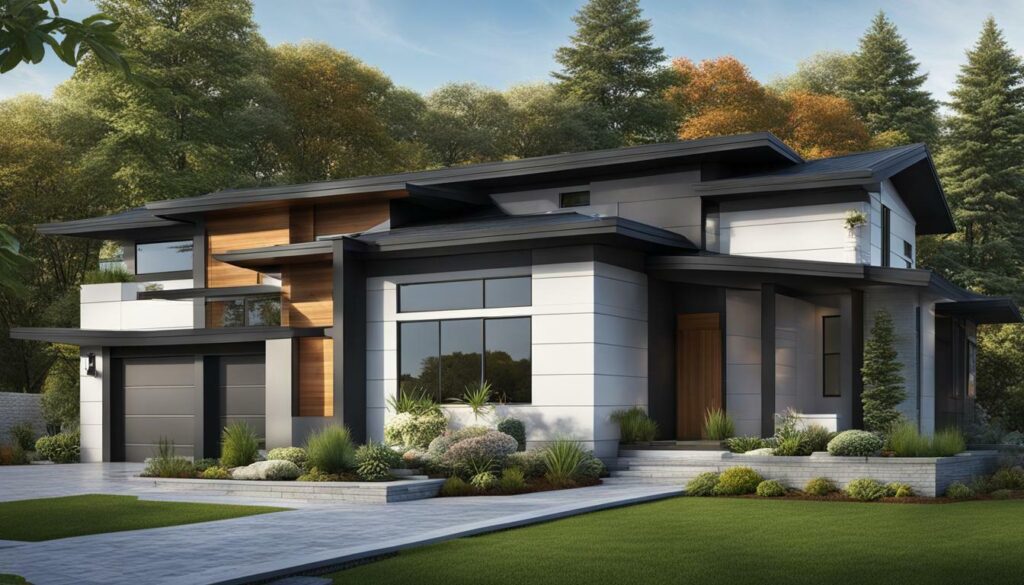
By carefully considering these factors, you can choose the top roofing with gutters for your home, ensuring a durable, efficient, and aesthetically pleasing gutter roofing system. Remember, investing in high-quality roofing with built-in gutters is not only a long-term investment in your home’s protection but also an enhancement to its overall curb appeal.
Understanding the Maintenance Requirements
While built-in gutters offer several benefits, ongoing maintenance is crucial to ensure their continued functionality and longevity. These concealed roof drainage systems, also known as box gutters, require regular care to prevent standing water and costly repairs. Proper maintenance is essential to protect the formed metal lining, such as terne-plate, from corrosion and to address any potential issues promptly.
Soldered joints, which can be weak points in built-in gutters, often require messy and temporary repairs. Restoring these gutters can be expensive, and finding skilled craftsmen experienced in their repair can be a challenge. However, there are alternative solutions available, such as elastomeric coating systems or waterproof roofing membranes, that can effectively protect the gutters and prolong their lifespan.
It’s important to note that commercial buildings may have custom box gutters or built-in gutters, while residential properties usually have K-style gutters. Common issues with built-in gutters include corrosion, clogs, incorrect pitching, worn flashing, and the need for diverter flashing. Regular inspections and cleaning are necessary to keep these gutters in optimal condition and avoid potential damage to the roof and foundation.
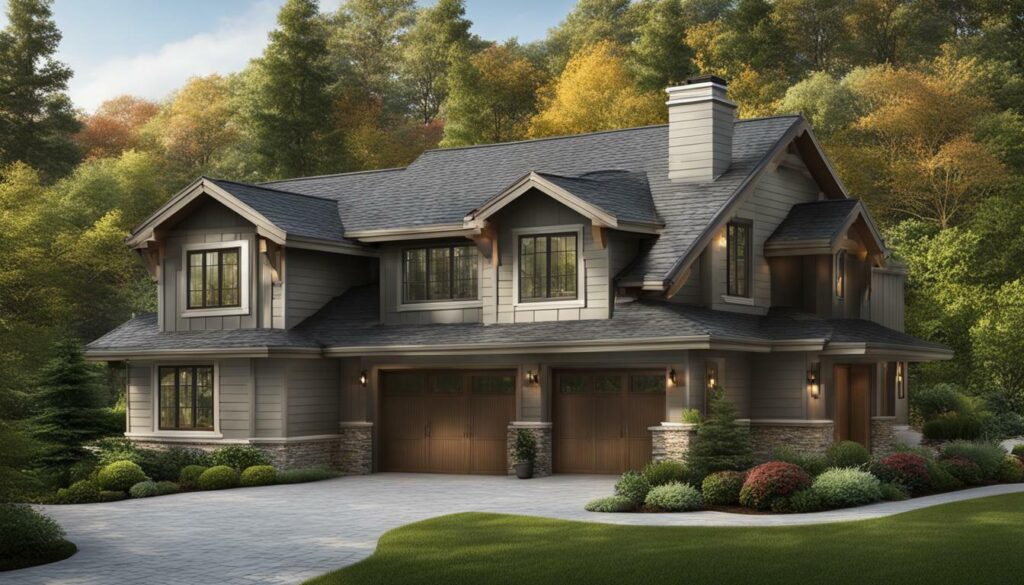
| Task | Frequency |
|---|---|
| Inspect for debris and clogs | Twice a year |
| Clean gutters | At least twice a year |
| Check for leaks or corrosion | Once a year |
| Repair or replace worn flashing | As needed |
| Consider protective coatings | Approximately every 5-10 years |
Overall, while built-in gutters offer a beautiful and protective element for older homes, it’s essential to stay proactive with maintenance. Regular inspections, cleanings, and addressing any potential issues promptly will help ensure their continued functionality and protect your home from potential water damage and costly repairs.
Addressing Common Gutter Issues
Like any gutter system, built-in gutters may encounter common issues that homeowners should be aware of and promptly address to maintain optimal performance. One of the most common problems is corrosion, as the metal lining of built-in gutters is susceptible to rust and deterioration over time. Regular inspections and applying protective coatings or sealants can help prevent corrosion and extend the lifespan of these gutters.
Clogs are another issue that can affect built-in gutters. Leaves, debris, and other outdoor elements often find their way into the gutter system, obstructing the flow of water and leading to potential water damage. Regular cleaning and ensuring proper gutter maintenance can help prevent clogs and ensure efficient water drainage.
Incorrect pitching is another common gutter issue that homeowners may encounter. If the built-in gutters are not properly pitched or sloped, water can accumulate and pool, causing potential damage to the gutter system and the surrounding structure. Addressing this issue may require professional assistance to ensure correct installation and proper water flow.
Worn flashing, which is the metal strip that connects the roof to the gutter, can also pose a problem for built-in gutters. When the flashing becomes worn or damaged, it can lead to water leakage and compromise the effectiveness of the gutter system. Regular inspections and timely repairs or replacement of worn flashing can help maintain the integrity of the gutters and prevent water damage.
Additionally, some built-in gutters may require the installation of diverter flashing to effectively redirect water away from vulnerable areas. This additional feature helps prevent water intrusion and ensures optimal performance of the gutter system. Consulting with a professional gutter installer can help determine if diverter flashing is necessary for your built-in gutter system.
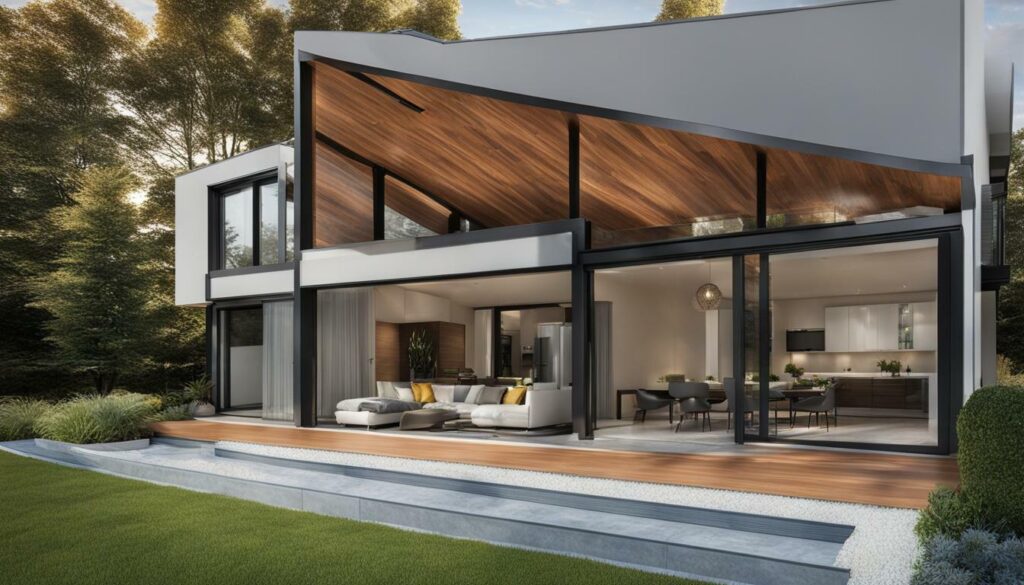
| Common Gutter Issues | Preventive Measures |
|---|---|
| Corrosion | Regular inspections, protective coatings or sealants |
| Clogs | Regular cleaning, proper gutter maintenance |
| Incorrect pitching | Professional assistance, correct installation |
| Worn flashing | Regular inspections, timely repairs or replacement |
| Diverter flashing | Consultation with a professional gutter installer |
By addressing these common gutter issues promptly and proactively, homeowners can ensure that their built-in gutter system remains efficient and protects their home from potential water damage. Regular maintenance, inspections, and timely repairs are key to maximizing the longevity and performance of built-in gutters.
The Cost of Neglecting Built-In Gutters
Neglecting the maintenance of built-in gutters can lead to significant and expensive repairs, underlining the importance of regular inspections and timely interventions. When these concealed roof drainage systems are not properly maintained, they can develop issues such as corrosion, clogs, incorrect pitching, worn flashing, and the need for diverter flashing. These problems can compromise the overall functionality and longevity of the gutter system, ultimately resulting in water damage to your home’s foundation and structure.
One common issue with built-in gutters is corrosion. Over time, the metal lining used in these gutters, such as terne-plate, can deteriorate due to exposure to moisture and other environmental elements. Corrosion weakens the gutter’s integrity, leading to leaks and potential water damage. Regular inspections and cleaning can help identify early signs of corrosion and prevent further deterioration.
Another problem that can arise is clogging. Built-in gutters can become susceptible to debris buildup, hindering proper water flow. This can cause water to overflow and potentially seep into your home’s foundation, leading to structural damage and costly repairs. Regular cleaning and gutter maintenance can help prevent clogs and ensure optimal water flow.
Incorrect pitching and worn flashing are additional issues that can impact the effectiveness of built-in gutters. Improperly pitched gutters can lead to water pooling, which can contribute to roof and structural damage. Worn flashing, which helps prevent water from penetrating the roof, can also compromise the gutter system’s ability to effectively divert water away from your home. Timely repairs and replacements of worn flashing are essential to maintain the integrity of the gutter system.

Proactive care and regular maintenance of built-in gutters are crucial to avoid unnecessary expenses and protect your home from water damage. By addressing gutter issues promptly and enlisting the assistance of professionals experienced in gutter and roofing installation, you can ensure the longevity and functionality of your built-in gutter system.
Box Gutters for Older Homes
For owners of older homes, box gutters add a distinctive architectural element, but they require specific care and attention due to their integration with the overall structure. These concealed roof drainage systems are designed to blend seamlessly with the roofline, preserving the historic character of the building. However, they are prone to issues such as corrosion, clogs, and incorrect pitching, which can lead to water damage if not properly maintained.
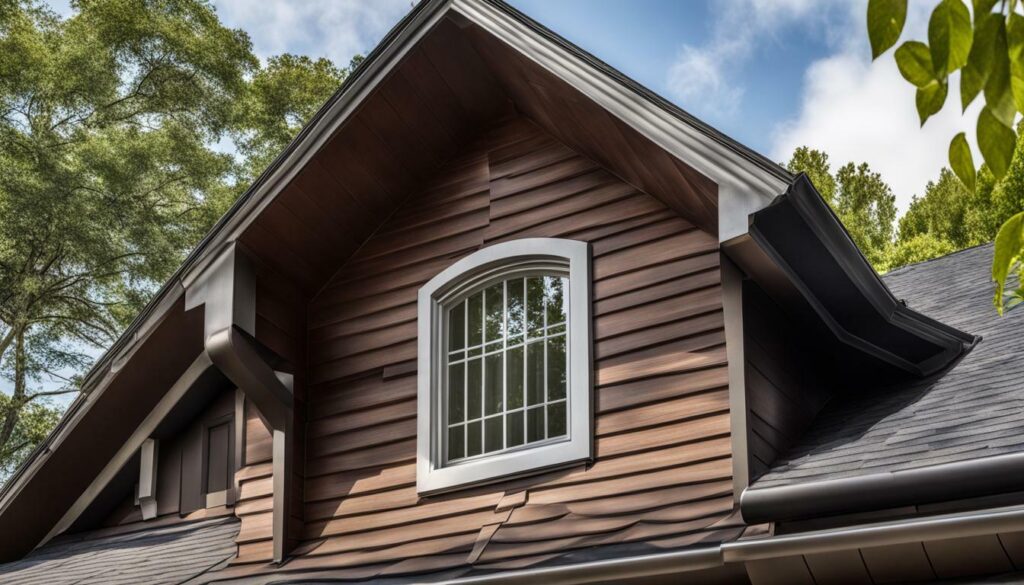
To ensure the longevity and performance of box gutters, regular inspections and cleaning are essential. Their wider design makes them less likely to become clogged compared to other gutter types. However, they may require professional assistance for thorough cleaning, as accessing them can be challenging. Additionally, worn flashing or the absence of diverter flashing can result in water overflowing onto the roof or walls, causing structural damage over time.
Restoring built-in gutters can be expensive and finding skilled craftsmen who specialize in box gutter repair can be a challenge. As an alternative, elastomeric coating systems or waterproof roofing membranes can be applied to provide a protective barrier against water intrusion and corrosion. These solutions help extend the lifespan of box gutters, reducing the need for frequent repairs and maintenance.
| Common Box Gutter Issues | Potential Solutions |
|---|---|
| Corrosion | Apply elastomeric coating systems or waterproof roofing membranes to protect against corrosion. |
| Clogs | Regularly inspect and clean the gutters to prevent debris buildup and potential blockages. |
| Incorrect Pitching | Ensure proper installation and maintenance to maintain the correct slope for effective water drainage. |
| Worn Flashing | Replace worn flashing to prevent water from seeping into the roofing system. |
| Need for Diverter Flashing | Install or replace diverter flashing to direct water away from vulnerable areas. |
Box gutters offer a beautiful and protective element for older homes, complementing the overall aesthetic while effectively channeling water away from the roof and foundation. By understanding their unique maintenance requirements and promptly addressing any issues, homeowners can ensure the longevity and functionality of box gutters, preserving the architectural integrity of their cherished homes.
Conclusion
Roofing with built-in gutters offers homeowners an efficient and visually appealing solution, but regular maintenance is vital to safeguard their functionality and longevity. When exploring roofing options for your home, it’s important to consider built-in gutters, also known as box gutters. These concealed roof drainage systems are not readily visible, preserving the historic character of buildings.
However, it’s crucial to keep in mind that built-in gutters require regular maintenance to prevent standing water and costly repairs. These gutters are typically lined with formed metal, such as terne-plate, which needs protection from corrosion. Soldered joints can also be a weak point and often require messy and temporary repairs. Restoring built-in gutters can be expensive, and finding skilled craftsmen can be a challenge.
Fortunately, there are alternatives to traditional repairs. Elastomeric coating systems or waterproof roofing membranes can be effective solutions for protecting built-in gutters from corrosion and minimizing the need for ongoing maintenance. Commercial buildings may have custom box gutters or built-in gutters, while residential properties usually have K-style gutters.
Common gutter issues, regardless of the type, include corrosion, clogs, incorrect pitching, worn flashing, and the need for diverter flashing. It’s essential for homeowners to address these issues promptly to prevent further damage and ensure the proper functioning of their gutter system. Box gutters, in particular, are an integral part of the home’s overhang or wall structure and are usually wider, making them less likely to become clogged. However, if neglected, repairs can be costly.
In conclusion, built-in gutters offer a beautiful and protective element for older homes, preserving their unique architectural charm. However, proper maintenance and timely repairs are essential to ensure their longevity and functionality. Homeowners should prioritize regular inspections, cleaning, and the use of protective coatings or membranes to extend the lifespan of their built-in gutters and avoid costly repairs in the future.
FAQ
Q: What are built-in gutters?
A: Built-in gutters, also known as box gutters, are concealed roof drainage systems that are integrated into the roof structure. They are not readily visible, preserving the historic character of buildings.
Q: Do built-in gutters require maintenance?
A: Yes, built-in gutters require regular maintenance to prevent standing water and costly repairs. They can be prone to issues such as corrosion and clogs, which need to be addressed promptly to ensure proper functionality.
Q: What are some common issues with built-in gutters?
A: Common issues with built-in gutters include corrosion, clogs, incorrect pitching, worn flashing, and the need for diverter flashing. Regular inspections and maintenance can help identify and resolve these problems.
Q: How can built-in gutters be repaired?
A: Restoring built-in gutters can be expensive, and finding skilled craftsmen can be a challenge. However, alternatives such as elastomeric coating systems or waterproof roofing membranes can be effective in addressing issues with built-in gutters.
Q: What benefits do built-in gutters offer?
A: Built-in gutters preserve the historic character of buildings, require less maintenance compared to traditional gutters, and provide improved water management and protection against leaks.
Q: What are the differences between built-in gutters and K-style gutters?
A: Commercial buildings often have custom box gutters or built-in gutters, while residential properties usually have K-style gutters. Built-in gutters are wider and less likely to become clogged, but they can be costlier to repair if neglected.
